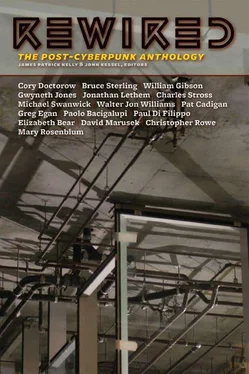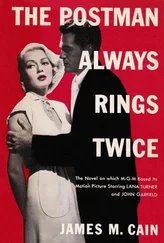As we drove north between two hills, the centre of Kampala appeared ahead of us, draped across a hill of its own. Compared to Nairobi, which I’d flown over a few hours before, Kampala looked uncluttered. The streets and low buildings were laid out in a widely spaced plan, neatly organised but lacking any rigid geometry of grid lines or concentric circles. There was plenty of traffic around us, both cycles and cars, but it flowed smoothly enough, and for all the honking and shouting going on the drivers seemed remarkably good humoured.
Iganga took a detour to the east, skirting the central hill. There were lushly green sports grounds and golf courses on our right, colonial-era public buildings and high-fenced foreign embassies on our left. There were no high-rise slums in sight, but there were makeshift shelters and even vegetable gardens on some stretches of parkland, traces of the shanty towns spreading inwards.
In my jet-lagged state, it was amazing to find that this abstract place that I’d been imagining for months had solid ground, actual buildings, real people. Most of my secondhand glimpses of Uganda had come from news clips set in war zones and disaster areas; from Sydney, it had been almost impossible to conceive of the country as anything more than a frantically edited video sequence full of soldiers, refugees, and fly-blown corpses. In fact, rebel activity was confined to a shrinking zone in the country’s far north, most of the last wave of Zairian refugees had gone home a year ago, and while Yeyuka was a serious problem, people weren’t exactly dropping dead in the streets.
Makerere University was in the north of the city; Iganga and I were both staying at the guest house there. A student showed me to my room, which was plain but spotlessly clean; I was almost afraid to sit on the bed and rumple the sheets. After washing and unpacking, I met up with Iganga again and we walked across the campus to Mulago Hospital, which was affiliated with the university medical school. There was a soccer team practising across the road as we went in, a reassuringly mundane sight.
Iganga introduced me to nurses and porters left and right; everyone was busy but friendly, and I struggled to memorise the barrage of names. The wards were all crowded, with patients spilling into the corridors, a few in beds but most on mattresses or blankets. The building itself was dilapidated, and some of the equipment must have been thirty years old, but there was nothing squalid about the conditions; all the linen was clean, and the floor looked and smelt like you could do surgery on it.
In the Yeyuka ward, Iganga showed me the six patients I’d be operating on the next day. The hospital did have a CAT scanner, but it had been broken for the past six months, waiting for money for replacement parts, so flat X-rays with cheap contrast agents like barium were the most I could hope for. For some tumours, the only guide to location and extent was plain old palpation. Iganga guided my hands, and kept me from applying too much pressure; she’d had a great deal more experience at this than I had, and an overzealous beginner could do a lot of damage. The world of three-dimensional images spinning on my workstation while the software advised on the choice of incision had receded into fantasy. Stubbornly, though, I did the job myself; gently mapping the tumours by touch, picturing them in my head, marking the X-rays or making sketches.
I explained to each patient where I’d be cutting, what I’d remove, and what the likely effects would be. Where necessary, Iganga translated for me — either into Swahili, or what she described as her “broken Luganda.” The news was always only half good, but most people seemed to take it with a kind of weary optimism. Surgery was rarely a cure for Yeyuka, usually just offering a few years’ respite, but it was currently the only option. Radiation and chemotherapy were useless, and the hospital’s sole HealthGuard machine couldn’t generate custom-made molecular cures for even a lucky few; seven years into the epidemic, Yeyuka wasn’t yet well enough understood for anyone to have written the necessary software.
By the time I was finished it was dark outside. Iganga asked, “Do you want to look in on Ann’s last operation?” Ann Collins was the Irish volunteer I was replacing.
“Definitely.” I’d watched a few operations performed here, on video back in Sydney, but no VR scenarios had been available for proper “hands on” rehearsals, and Collins would only be around to supervise me for a few more days. It was a painful irony: foreign surgeons were always going to be inexperienced, but no one else had so much time on their hands. Ugandan medical students had to pay a small fortune in fees — the World Bank had put an end to the new government’s brief flirtation with state-subsidised training — and it looked like there’d be a shortage of qualified specialists for at least another decade.
We donned masks and gowns. The operating theatre was like everything else, clean but outdated. Iganga introduced me to Collins, the anaesthetist Eriya Okwera, and the trainee surgeon Balaki Masika.
The patient, a middle-aged man, was covered in orange Betadine-soaked surgical drapes, arranged around a long abdominal incision. I stood beside Collins and watched, entranced. Growing within the muscular wall of the small intestine was a grey mass the size of my fist, distending the peritoneum, the organ’s translucent “skin,” almost to bursting point. It would certainly have been blocking the passage of food; the patient must have been on liquids for months.
The tumour was very loose, almost like a giant discoloured blood clot; the hardest thing would be to avoid dislodging any cancerous cells in the process of removing it, sending them back into circulation to seed another tumour. Before making a single cut in the intestinal wall, Collins used a laser to cauterise all the blood vessels around the growth, and she didn’t lay a finger on the tumour itself at any time. Once it was free, she lifted it away with clamps attached to the surrounding tissue, as fastidiously as if she was removing a leaky bag full of some fatal poison. Maybe other tumours were already growing unseen in other parts of the body, but doing the best possible job, here and now, might still add three or four years to this man’s life.
Masika began stitching the severed ends of the intestine together. Collins led me aside and showed me the patient’s X-rays on a light-box. “This is the site of origin.” There was a cavity clearly visible in the right lung, about half the size of the tumour she’d just removed. Ordinary cancers grew in a single location first, and then a few mutant cells in the primary tumour escaped to seed growths in the rest of the body. With Yeyuka, there were no “primary tumours”; the virus itself uprooted the cells it infected, breaking down the normal molecular adhesives that kept them in place, until the infected organ seemed to be melting away. That was the origin of the name: yeyuka , to melt. Once set loose into the bloodstream, many of the cells died of natural causes, but a few ended up lodged in small capillaries — physically trapped, despite their lack of stickiness — where they could remain undisturbed long enough to grow into sizable tumours.
After the operation, I was invited out to a welcoming dinner in a restaurant down in the city. The place specialised in Italian food, which was apparently hugely popular, at least in Kampala. Iganga, Collins and Okwera, old colleagues by now, unwound noisily; Okwera, a solid man in his forties, grew mildly but volubly intoxicated and told medical horror stories from his time in the army. Masika, the trainee surgeon, was very softly spoken and reserved. I was something of a zombie from jet lag myself, and didn’t contribute much to the conversation, but the warm reception put me at ease.
Читать дальше












